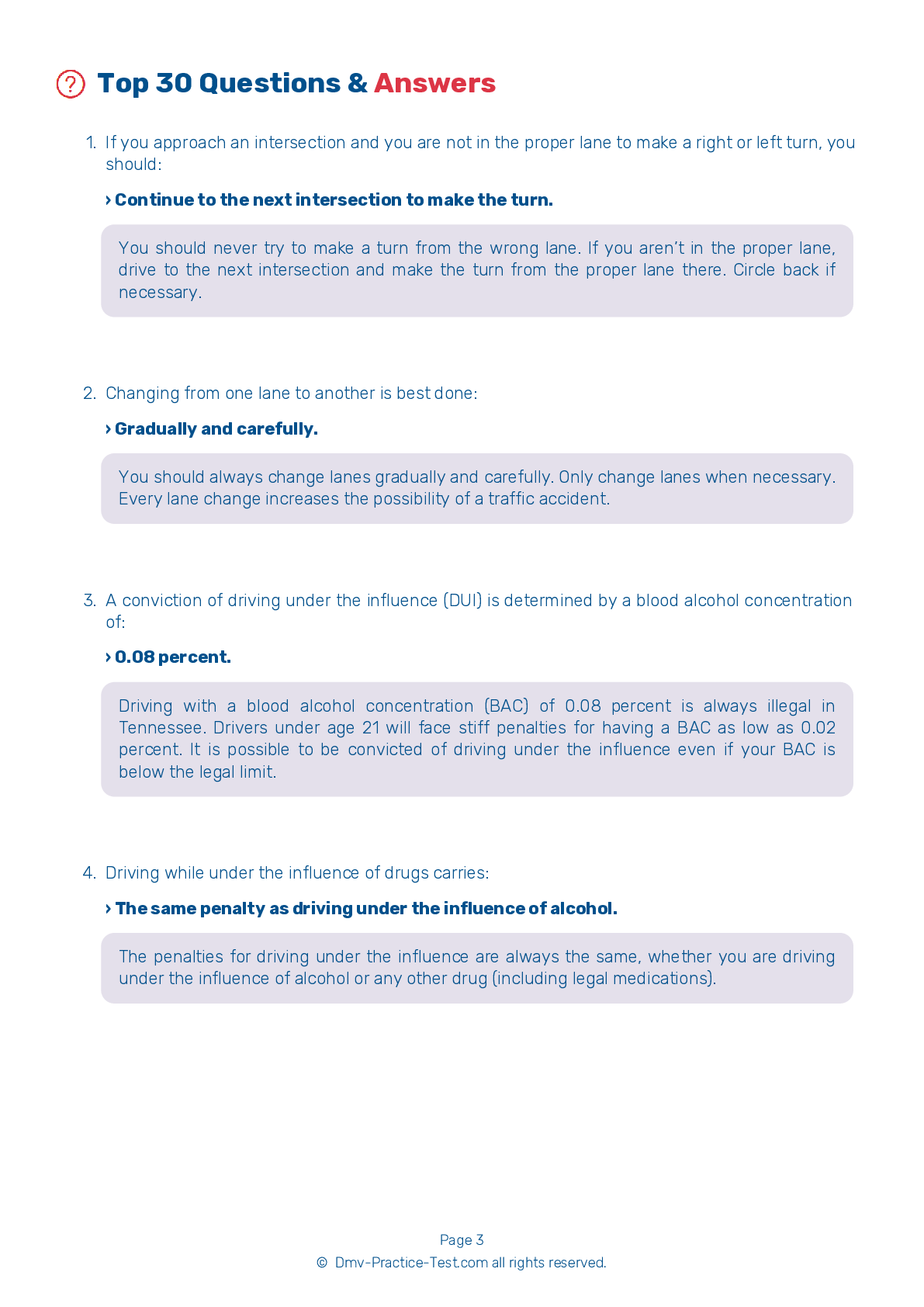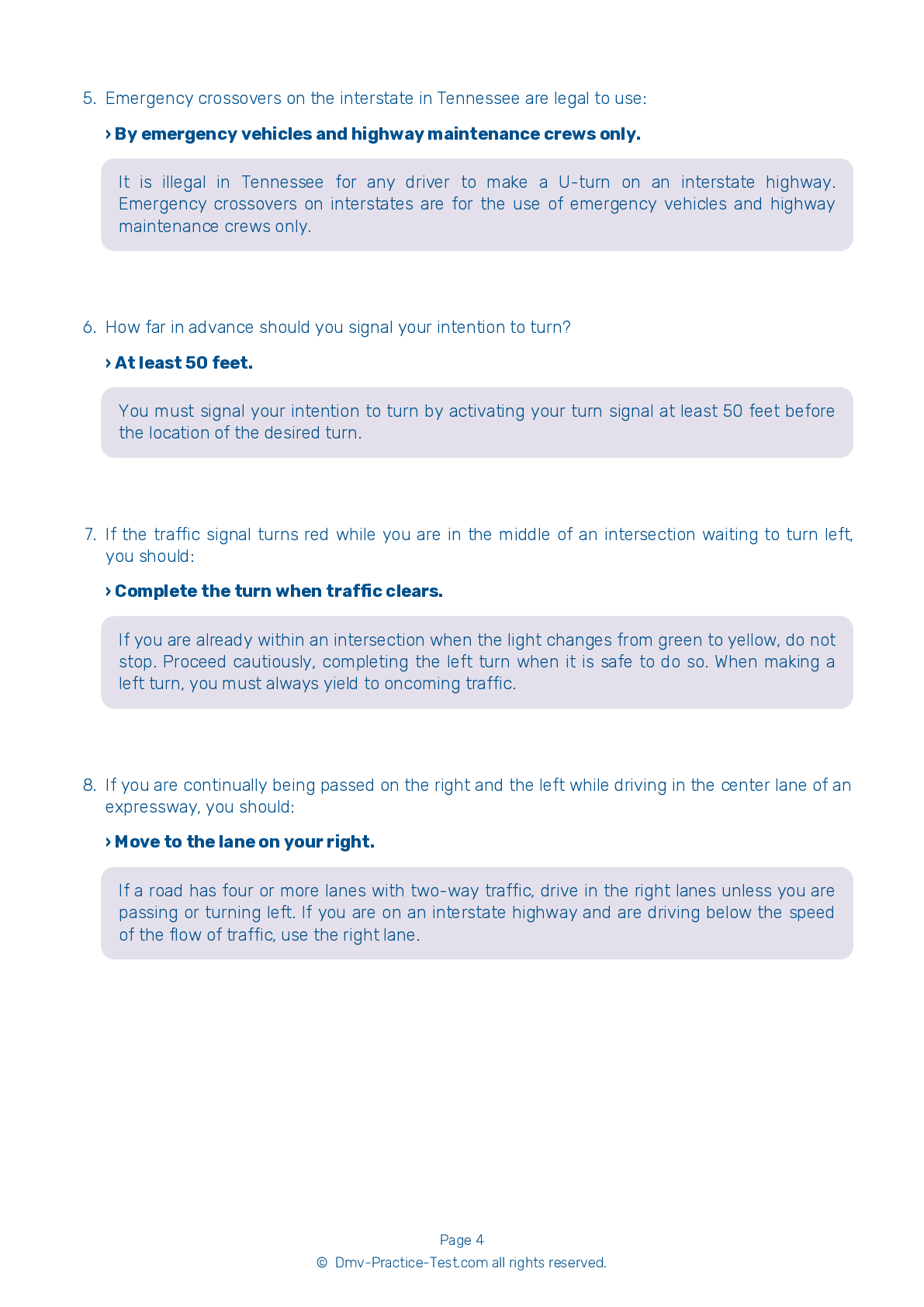FREE Tennessee DMV Practice Test #7 Page 3 of 4
The Tennessee DMV practise exams for January 2025 have been updated. It includes questions based on the most important traffic signals and laws for 2025 from the Tennessee Driver Handbook. To study for the DMV driving permit test and driver's licence exam, use actual questions that are very similar (often identical!) to the DMV driving permit test and driver's licence exam.
Each question on the practise exam has a tip and explanation to help you recall the ideas. Questions about traffic rules, traffic signs, and driving statutes, as well as knowledge from the Driver Handbook, will be included in the written portion of the official Tennessee DMV test.
You must properly answer 24 of the 30 questions to receive a passing mark. Use the Tennessee Department of Motor Vehicles' practise exam to help you prepare for your instruction permit or driver's licence.
The DMV exam is offered in a variety of languages.
Using any form of testing help will result in an automatic fail, and the DMV may take further action against your driver's licence, so avoid it.
17 . If it feels like your tires have lost contact with the surface of the road, you should:
If it feels like your tires have lost contact with the surface of the road, you should ease your foot off the gas pedal and stay off the brakes. Do not try to stop or turn until your tires are gripping the road again.
18 . From top to bottom, the following is the proper order for traffic lights:
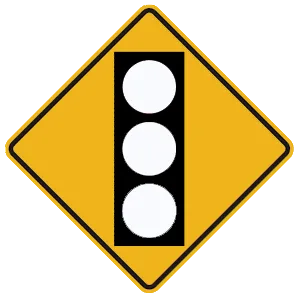
Warning signs are usually yellow with black markings. They alert you to conditions that are immediately ahead. This sign warns drivers about the presence of traffic signals at an intersection ahead.
19 . This sign means:
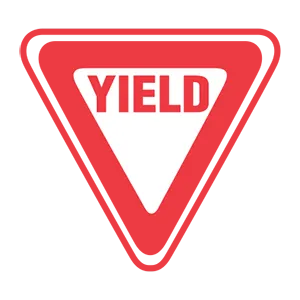
A three-sided yield sign indicates that you are approaching an intersection where you must wait for vehicles on the other roadway to pass before you proceed. You do not need to come to a complete stop if you are sure that no other vehicles are coming, but you should still always slow down and enter the intersection with caution.
20 . Sudden wind gusts on highways:
While it can create special problems for large vehicles, strong wind can cause problems for all drivers. Wind can lower visibility by blowing dirt and dust into the roadway, but it can sometimes also physically move a vehicle.
21 . You are driving on a one-way street. You may only turn left onto another one-way street if:
You may turn left onto a one-way street that moves to the left if there is no sign prohibiting the turn. You may not turn left onto a one-way street where traffic moves to the right.
22 . If you become drowsy while driving, you should:
If you start to feel tired while driving, drive to the first available rest stop or service area to take a break, nap, stretch, or change drivers. You should not rely on caffeine pills or energy drinks, as these are not a replacement for rest and may make your driving even more dangerous.
23 . On a multilane road, a dashed yellow line next to a solid yellow line means:
Where there are both solid and dashed yellow lines between lanes of traffic, only traffic directly next to the dashed line may cross the centerline to pass. Drivers next to the solid line may not pass.
24 . When you see this sign, you should stop and:
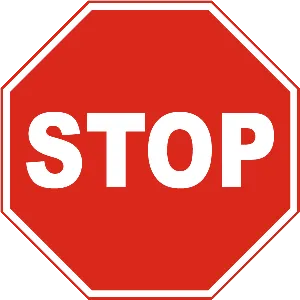
At a stop sign, you must come to a full stop and check for traffic in all directions before proceeding.
Need Car Insurance? No problem!
Compare the best rates in Tennessee and find a personalized policy that meets your needs.
1. Are You Currently insured ?
2. Married ?
3. Do you own your Home?
4. Do you have more than 1 car ?
5. Have you or a Family Member Honorably Served in U.S. Military ?
6. Your Name
7. Age
8. Zip code
IMPORTANT REMINDER:Auto Insurance is Mandatory to drive in Tennessee. Get covered before you hit the road to avoid any fines.
Ranked by best match

